Tags
Austria, Bratislava, Central Europe, Ljubljana, peek, road trip, Salzburg, Slovakia, Slovenia, small cities, Weekly Photo Challenge
You’ve met the older, more famous siblings– Vienna, Budapest, and Prague – in a previous post, but let me introduce some of the little sisters of Central Europe. They may not have the same prestige, but they’re distinctive and appealing in their own right and are well worth a peek.
Bratislava, Slovakia (pop. ~ 425,000) – our first little city stop – has a bit of an unnecessary inferiority complex. Our Free Tour guide must have said five times that she figured we were all there because we’d been in Vienna, an hour away, anyway. Umm, not us. We had actually planned a longer stay in Slovakia than we did in Vienna, and we were pretty psyched about our cool but affordable hotel in Bratislava (with a brewery onsite) and spending more time here than the typical day trippers.
Like many Central and Eastern European cities that used to be under the Soviet thumb, Bratislava has an older, more colorful history that was partially bulldozed by the Communists’ dreary utilitarianism. That means the pastel-tinged Old Town and the red-roofed castle grounds are bluntly divided by a futuristic bridge and dull highway that wiped out an old synagogue and a huge chunk of the old city’s narrow, twisting streets. It also explains the hulking concrete apartment blocks across the Danube River and the overbearing monuments in other parts of the city.
The good news is that this with-it city is both bent on changing its image and taking the Soviet changes in stride. There is an unmistakable pride in the unique, modern bridge, and that helps offset the frustration of losing a cherished old part of the city. Those massive residential blocks are now painted in a rainbow of colors; our guide aptly called it Lego town, and it’s a great example of turning lemons into lemonade. There are trendy brew pubs and Mac-filled coffee shops in both the old and new parts of the town, and even the manholes have an quirky, artistic touch.
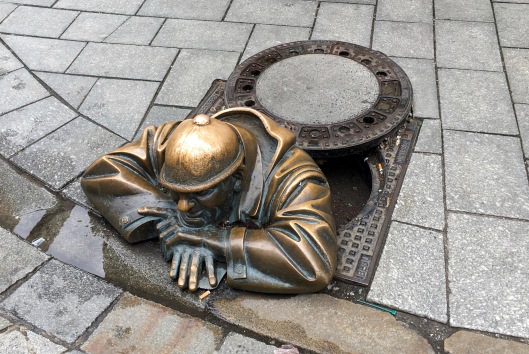
***
As we drive from Hungary to western Austria, we pass through nearly the entire width of Slovenia, one of the most exquisite countries in Europe, in my opinion. Although I’ve already raved about the capital, Ljubljana, in a 2014 post, it fully deserves another song of praise.
This enchanting city is even smaller than Bratislava, with fewer than 300,000 residents. The core of the downtown is pedestrian only, which makes things very pleasant after you’ve found a place to drop a car. Both sides of the tree-shaded Ljubljanica River house vibrant shops, hotels, restaurants, bars, street markets, and a seemingly endless number of outdoor tables.
Bikes whiz by, performers sing on the corners, varnished wood boats glide along the river, and it appears that every single person in town is either eating ice cream or drinking a beer as the autumn sun warms the last hours of the afternoon.
Overlooking the maze of brick walkways and buildings is a medieval castle, a staple of so many of Europe’s old towns and one of the fortress triplets of today’s profiled cities. Even if you’ve seen enough castles to last the rest of your days, the towers of these hillside edifices are the very best way to get the lay of the land, and in Ljubljana’s case, that vista includes a succession of terracotta roofs, green fields and woods approaching the mountains, and the Julian Alps themselves off in the distance. Talk about a view!
***
Our last city stop, the smallest but perhaps best known of the three, is Salzburg, Austria (pop. < 150,000). This visit really is just a peek. We’ve had so much fun trekking in Slovakia and Slovenia that we arrive rather late in Salzburg and have to press on to our next hiking base soon after.
Husband J remembers this town as a real charmer, and he is eager to show it to me for an afternoon and early evening. As we walk into the city along the river and view it from its castle above, it does not disappoint. Up close, too, it’s a handsome and cultured little metropolis; I’m infatuated early on with the soft stone walls and the wrought iron signs, the sparkle of the water and the impeccable wool fashions everyone is wearing. I’m obsessed with the ubiquitous stag motif and drool over the giant pretzels for sale in a few semi-busy squares.
Suddenly, though, we are in pressing crowds and discover that we are part of a St Rupert’s Day celebration, an event that looks and feels remarkably similar to Oktoberfest. Those couples I thought were so cute a few minutes ago are bothering me now that they’re listing into me; she looks silly with her bosom billowing out of a dirndl bodice, and his lederhosen appear ill-fitting and stained at close range. The pretzels now seem obscenely expensive (and dry – we discover after foolishly buying one), and the shops a bit ostentatious with their Bavarian designer hats and fancy accoutrements. We beat a hasty retreat up the hill to the castle to get away from the noise, disorder, and conspicuous consumption.
Upon our descent and escape back into the quieter streets, I do another 180 and decide maybe I do love the look of the boiled wool jackets and hats on the local families, and wish I could buy both of those items, plus a stag scarf, a couple of pins for my hat, and maybe some very pricey suede boots. (I desist.)
I admire the setting sun on the bridges, conjure up Mozart and Salieri as classical music wafts out of hidden courtyards, and drink another beer as J eats a giant weisswust dinner in a cozy biergarten. Just like that, Salzburg is back in my good graces, completing a trifecta of small town visits on our Central European road trip.
***
This is likely my last post on our Central European road trip, which turned out to be a perfect combo of big cities, a series of excellent hiking stops and rural stays, and many smaller towns in between. For information or stories about the trip, see the following posts:
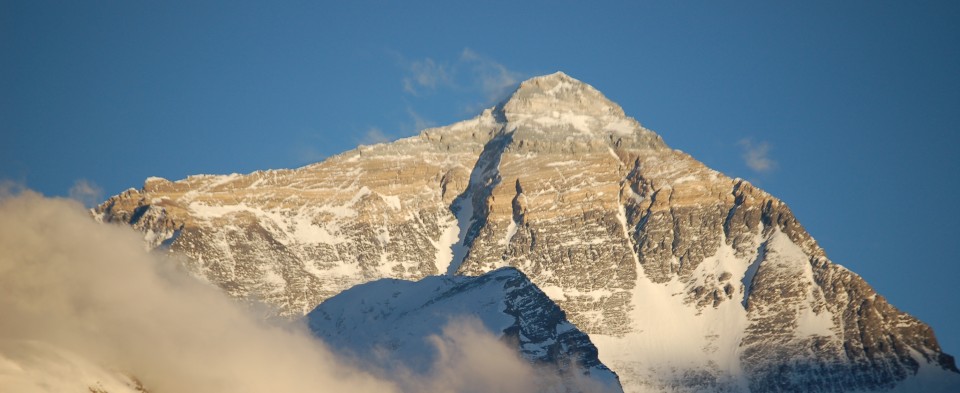

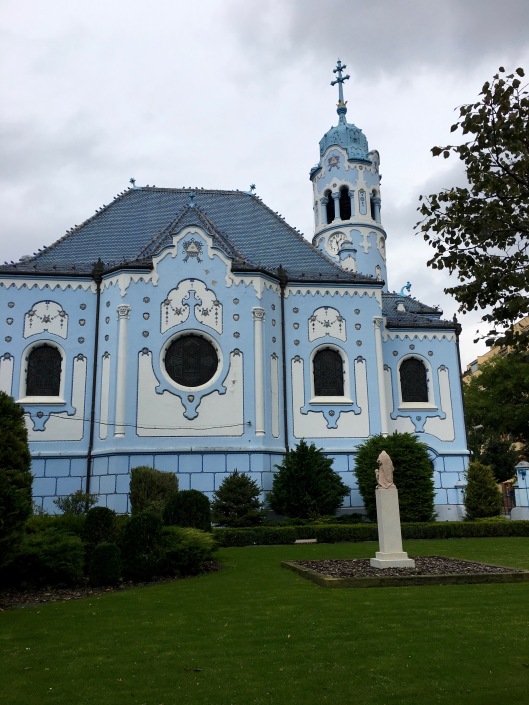


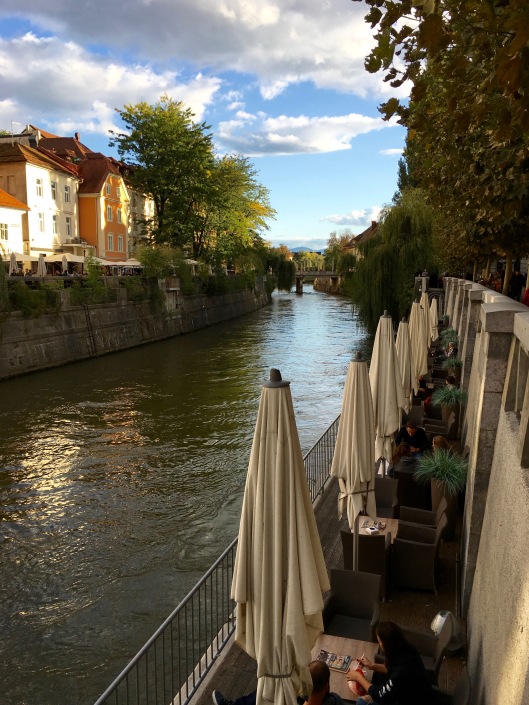
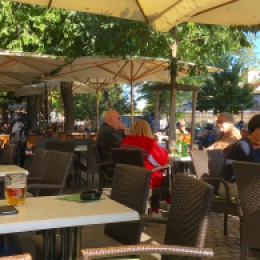










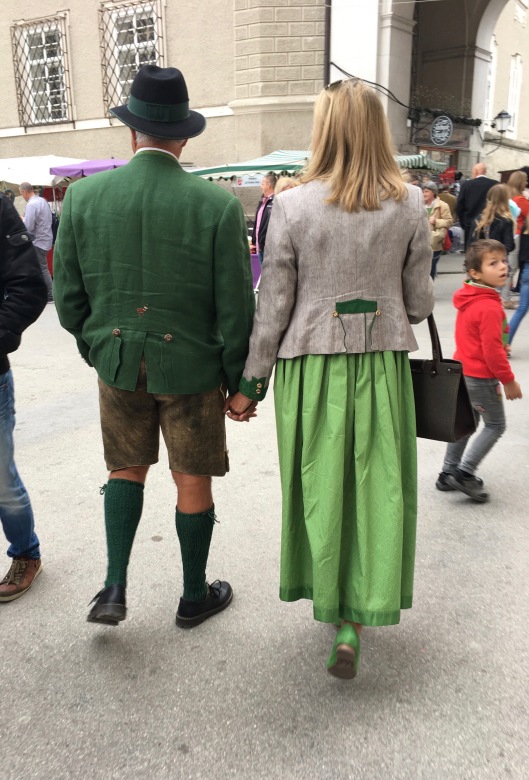

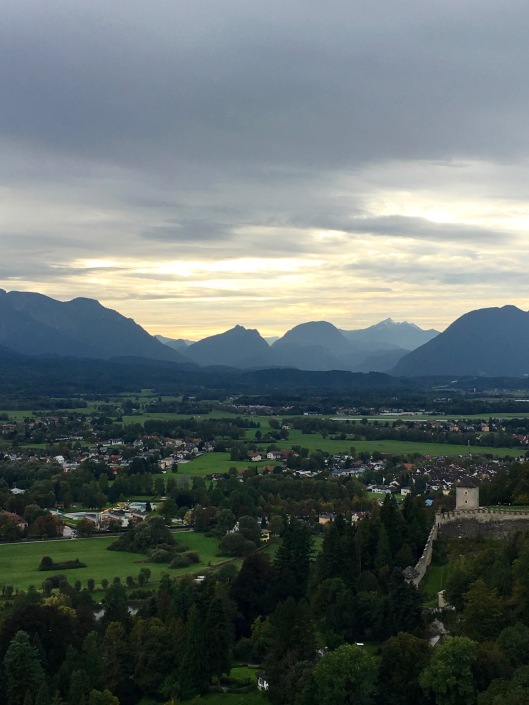
Score out of 10 for Bratislava?
LikeLike
I’ll give it an 8. Very fun little town, but we had a cold, chilly day, so I can’t judge some factors.
LikeLiked by 1 person
ok thanks
LikeLike
the suede boots would have been a nice buy. or a scarf. their wool hat and jacket sure look warm and comfy, though, i’ll give it that! how cold was it when you went?
your european road trip seemed really fun and educational at the same time. it’s amazing how outside of the more famous cities are actually quiet ones with a bit more charm and less tourists that it actually feels like you’re a local yourself, isn’t it?
i especially liked your photo of Ljubljana (how do you pronounce that?), with the river winding past cafes and shops. I’m not much of a coffee drinker but i sure imagined myself sitting there sipping a warm cup, enjoying a bit of solitude by writing my thoughts. but who am i kidding? if i were there, chances are, i’d probably be chasing my kid around and watching her like a hawk so she doesn’t fall into the water below. lol.
LikeLiked by 1 person
We had a nice, temperate day in Salzburg – not too hot, not too cold – lucky! We did have a great trip overall, and some of the smaller towns indeed gave off that more familiar feel, especially after some time there. Ljubljana (Loo-bli-ana) is honestly one of the most charming cities ever! I went with my daughter in 2013 and fell in love with it. It was great to finally be able to show it to my husband.
LikeLike
I enjoyed so much to ‘travel’ with you in Central Europe. You shared beautiful pictures and remarkable impressions of each place, some of which, I had visited before but hadn’t noticed what you did. It was a real treat! Thanks, Lexie. Looking forward to your next destination.
LikeLiked by 1 person
Thanks, Lucile! I find that many of the bloggers I follow see places and things differently than I do, and what a treat that is! Glad I could reveal some new things about old places for you. My next destination will be very different from this one; I’m off to Ecuador in January!
LikeLike
So glad you decided to spend more time in Bratislava. It’s definitely underrated and an interesting blend of eras, as you showed so well. The only one out of these three cities that I haven’t been to is Salzburg. Those quirky ethnic clothes are cute, but often outrageously expensive. One of my friends has a lederhosen fetish, so he splashed out for a pair in Germany. Anyway…your trip sounds like a resounding success!
LikeLiked by 1 person
Bratislava and Slovakia in general were the wild cards in our itinerary, and they came up as pure winners. So glad we dropped a few days elsewhere to add more time in that beautiful country.
I loved the whole idea and look of Salzburg – the musical history, the Bavarian clothing and food, and the very polished patina of a rich, old town – but it was so expensive and borderline uppity somehow. I DID end up really appreciating it and am very happy to have seen it, but I was glad to head back into the country quickly afterward. I actually understand the lederhosen fetish (well, at least infatuation); when they are fresh and clean, they are stunningly beautiful with the leather and stitching and hardware. Add a crisp shirt and a brass buttoned jacket, and it’s a pretty sharp outfit! (But so many guys’ leather bottoms were filthy! Hard to wash, I suppose) I would have worn that attire over the dirndls any day!
LikeLike
Loving this personable look into some of the smaller cities. I’m really getting a feel for them through your senses. For Bratislava, you had me at on-site brewery. However, I also love that they mimicked the older house colors on the apartment blocks across the river.
LikeLiked by 1 person
The beer at our hotel brewery was delicious, and so was the food. I didn’t even think about the apartment colors mimicking the older buildings, but you are exactly right – good eye!
LikeLiked by 1 person
Excellent post on these small cities, Lex. Terrific images and description.
LikeLiked by 1 person
Thanks, Jane. We had such an array of experiences on the trip, and these towns were a nice in-between stop every so often as we made our way from larger cities to our hiking bases.
LikeLiked by 1 person
Looks like a lovely part of Europe to experience, thanks for the tour. I’d have to ask though, what was your pacing? One day for a city/area (not counting travel time)? Two? Was it about right or would you change it?
LikeLiked by 1 person
We would not have changed much. Bigger cities and great hiking areas (Budapest and western Austria, for example) got as many as three days each, most places got at least 2-2.5 days, and some, like these three smaller cities, got 1 to 1.5 days. Luckily, we had polled friends, pored over blogs and other online sources, and figured out in advance how much time we thought each place merited. We had 14 full days there, and everything is very close together, so travel times were negligible (and part of the fun in and of themselves).
I’d definitely go back in the future for more time in Budapest, and I’d return to hike more of the High Tatras and the Alps. Vienna and Prague could be fun again, especially if I saw different areas and things, but we felt we covered them well. I was quite pleased with how it all came together and feel we guessed right on just about everything.
LikeLiked by 1 person
Thanks for the details, Lex. I’m hoping I can start steering the wife away from guided tours for all the foreign trips, so tips are appreciated.
LikeLiked by 1 person
We’ve done many independent trips, so let me know if you are ever trying to plan one and I’ll see if I can help!
LikeLiked by 1 person
Interesting to get a peek into the little sister cities of Europe about which I know very little. I particularly like the photos of the riverside cafes. Looks charming and beautiful. Sounds like the trip was a great success!
Peta
LikeLiked by 1 person
I could plan a trip just around all the riverside cafes – coffee and some writing all morning, and drinks and conversation all night! I knew little of that part of Europe myself before a trip with my daughter in 2013; this was a natural extension (and partial repeat), and it was just as great the 2nd time around!
LikeLike
Wonderful photos Lex, especially the 2 of Ljubljanica River. And the view from the fortress tower is fabulous. I remember reading Badfish’s post about Bratislava and thinking I’d like to go there. You confirm that. I love that they’ve painted the old Soviet buildings in candy colours. And that shot of them from the bridge is brilliantly framed.
I’ve seen nothing of Eastern Europe, and can’t wait to go exploring there.
Alison
LikeLiked by 1 person
Thanks, Alison – that river is one of the most picturesque in-city rivers I’ve ever seen. The willows drip over the banks, and through some trick of nature, the sun is always hitting the water at a perfect angle! Badfish’s post was one of several that pushed me to stop longer than a mere pass-through in Bratislava, and I’m glad for that and also for a different blogger’s nudge to spend more time in Slovakia overall.
LikeLiked by 1 person
There’s a growing list of people who said that Bratislava is underrated, and now you joined the list and make me even more curious of the Slovak capital. I can imagine how interesting it would be to watch the city’s transformation and the contribution its residents make to this. As for Ljubljana and Salzburg, your photos and description of both cities further reaffirm what I’ve been reading. They surely live up to their reputation!
LikeLiked by 1 person
For their size and relative lack of international attention, these three places really deliver! It’s hard to go wrong when your city has a compelling history, is perched on an attractive river, there’s a castle up above, and you’re at that perfect point of travel fame – when the infrastructure and tourist services are all there, but the crowds have not fully materialized. We really enjoyed our time in these small towns; they were the perfect in-between as we moved from big city to rural countryside and back throughout the trip.
LikeLiked by 1 person
Like you, we loved Bratislava and Salzburg. Salzburg, in particular, was really enjoyable because we were there during the holidays when music and markets were happening everywhere. Great to see these towns through your lens! Especially love the dragon shot!
LikeLiked by 1 person
I LOVE European towns at holiday times! Ljubljana has a whole dragon motif thing going, so they are on the bridges, the castle, etc. Very fun!
LikeLiked by 1 person
We loved Salzburg. Must add the other two to my list.
LikeLiked by 1 person
Oh, you’d love them both, I think! Both are real charmers – the hard part is getting to Ljubljana, but if you’re anywhere near Vienna or even in Croatia, there is good train service. Hope your trip is still going well!
LikeLiked by 1 person
Still having a wonderful time.
LikeLiked by 1 person
We haven’t visited any of the smaller cities in Europe. Given a chance, we’d love to explore them and walk till we drop. I absolutely loved the shot of the green dragon! Why are there so many places in this world and not enough time?
LikeLiked by 1 person
The walking in all these places is so great! We walked miles and miles in these cities (thank goodness because we consumed beer and bread all day!) and around every corner was another fantastic sight. The dragon sits on one of the bridge stanchions over the Ljubljanica River; he is both a handsome and fearsome fellow!
LikeLiked by 1 person
Nice round-up of the small cities, Lexie. They all look like winners, even Saltzburg when you can get away from the crowds, which we would try to do as well. I am inspired by Ljubljana. I vaguely remember driving through there on the way to Croatia in my early twenties, but I definitely did not give it enough time. Slovenia is up and coming and I’d love to check it out, before it gets overrun. But, I”m on the “wrong” side of the world right now and there is so much to see everywhere!! You sure had some wonderful adventures and experiences on your recent trip to Eastern Europe. Thanks for sharing them in such a personal and unique manner.
LikeLiked by 1 person
Thanks, Liesbet! I know your 20s weren’t that long ago, but I really think Ljubljana has really come into its own more recently than that, so it’s not surprising it didn’t make a stronger impression back then. All the more reason for you to go back someday!
We really did have an excellent trip in every way. We toyed with a bunch of more exotic destinations (Ethiopia was the other “finalist”), but I’m glad we picked the road trip in Europe. It was a nice fall trip, and it rounded out my coverage of that part of the world a little more. I agree – there’s just so much to see and do all around the globe!
LikeLiked by 1 person
Oh these smaller gems really speak to me. We had several lovely days in Ljubljana so especially loved seeing your photos of this special spot.
LikeLiked by 1 person
I could have written another whole post just about Ljubljana, but I figured my readers had heard enough about it from me! 🙂 I just LOVE that little city!
LikeLiked by 1 person
We did too Lexie. Such a sweet place.
LikeLiked by 1 person
Bratislave and Llubljana are two of the best kept secrets in Europe! Love them great posts!
LikeLiked by 1 person
I agree, Andy. Except I keep telling people to go to them, Ljubljana in particular, so they are not going to be secrets much longer!
LikeLike
Beautiful post Lex – the colors are marvelous! Like many others, have been to the big 3 but not to these. Thanks for the tour!
LikeLiked by 1 person
Thanks, Tina. Strangely enough, I had been to some of the little sisters even before the big 3. That’s probably in my nature – always looking for the underdog or the less well-known – but I’m gradually filling in the iconic, famous places as well as the out-of-the-way ones! (I really need to get to some of the big cities in Italy someday soon!)
LikeLike
Gotta love the little sisters, eh. I spent a summer in Ljubljana, and I swear there was no castle, or just remnants, but another blogger says the castle has always been there. I’ll have to get out my 35mm slides and check it out. I do remember sitting on a low wall of stone, but now…it’s all castle? Did you go up in it? Is there a wall you can sit on?
LikeLiked by 2 people
I really can’t tell if you are still pulling my (and Manja Mexi Movie’s) leg?! We actually joked about your castle confusion in a post of mine a few weeks ago (https://lexklein.wordpress.com/2017/09/28/road-trip-central-europe/),
copied here:
“MMM: He’s alive!! *celebrates* And it seems he has tried to convince everybody that there was no castle in Ljubljana. Hahaha.
Lex: Haha – remember that?!
MMM: I didn’t know he did it to you too! He certainly tried it with me several times.”
Yes, I’ve been up in that castle twice in the last four years; there is surely a wall that I could have sat on, but there has also surely been an entire castle up there for centuries! That summer you lived there … lots of drugs and alcohol? Just kidding, but you continue to crack me (and MMM) up with your insistence on the lack of a castle up there! We love ya, though! 🙂
LikeLiked by 1 person
I think he’s pulling our leg since the beginning, Lexi. 😉 But yeah, we love him. Even if he provides proof.
LikeLiked by 1 person
Lex…there was “something” up there, and maybe it was a castles but perhaps we weren’t allowed inside. I simply cannot picture the castle, but do remember the wall. All my slides of that time are 35mm slides and stored away in Tombstone, AZ. I remember taking a photo from the bridge at the river up to the castle, and then one from up there back down to where I stood on the bridge. Also, sometime in the 90’s I went there again and met a young waiter who said that the castle was just finished and it looked odd because for his whole life, there was a crane up there. I don’t know how old he was, 25 or so. I don’t know why it would take 25 years to “fix” an existing castle is all I’m saying, but maybe it did. What I remember most was all the old businesses surrounding the base of the hill–metal workers, wood, etc. Now it’s all cafes and bars and restaurants.
I just googled it and it said they began work on it in the 60’s….I was there in 69, so maybe it was blocked off and I’ve blocked out the castle. But I must have been taking a photo from the bridge of “something” up on the hill! AND…MMM should certainly know! AND…the memory old geezers is not to be trusted.
LikeLiked by 2 people
We need you to go get your slides …
OK, so yes, I see a reference to the major renovation project from the 60s and on for some 35 years (coinciding with your visits), but in that same source and many others, I read:
“Originally a medieval fortress, it was probably constructed in the 11th century and rebuilt in the 12th century. It acquired its present outline with an almost complete overhaul in the 15th century, whereas the majority of the buildings date to the 16th and 17th centuries.”
I propose that you, MMM, and I all meet there next summer to toast the new/old castle!
LikeLiked by 1 person
I second this proposal.
LikeLiked by 1 person
HA! Ljubljana it is!!! Nas dravia (isn’t it?) The more I think on it, the more I can (almost) imagine the castle up there. It’s just that I remember this one photo I took of a lady I met there, and she was sitting on the stone wall. What is it they say about “selective memory”?
LikeLike
Hihih, alright! He speaks! The crane up there was indeed such a fixture that children used to draw it together with the castle. The key word is TOGETHER. There must have been a major reconstruction taking place which is now finished and everything looks very slick.
To me, the castle is a symbol of running around the antenna during my PE high school classes which I preferred to dodge and play basketball with the boys instead.
Well, the view is kind of nice too. Amore will never forgive me that I didn’t tell him about either the funicular, tourist train or road but rather made him walk up. In the winter!
We have eaten in the restaurant – yum, celery puree – but I haven’t been inside the castle or up on the tower. I hear they have a lovely staircase.
I’m going when either or both of you come over again. 😀 And then we can find the oldest employee and inquire about the history.
LikeLiked by 1 person
OK…three to cheer the castle. I did go inside the castle, all done up very nicely but it looks newish. I did not buy the fridge magnet!
LikeLiked by 2 people
Ah, too bad that it’s the last post, I could view your views and listen to your words again and again. Since I was born and bred in Ljubljana, I’m so glad you had a great time there again.
I don’t feel any special sistership with Bratislava and Salzburg, but I was only there one time apiece, quite a long time ago when the spirit of Bratislava was not yet jolly and there were machine-gunners on every supermarket floor. In Salzburg I listened to Neil Young live with Pearl Jam (without Ed) playing live in the main square, and then had to spend the entire night sleepless with a friend, waiting for our ride to return home. Let’s just say it dragged. Your photos of the costumes and talk of beer put me back, if only for a minute, and then I flee again.
But to Ljubljana I’ll return again and again, for the first time next month already. I’ll watch it turn into something that we could not envision: a generic Capital with the same old brands in shops and same old culinary hamburger offer. If you build it, they will come. I wish for Ljubljana visitors such as yourself, who wander and wonder, always on the lookout for the good. Because there always is that too, the good, the different, that which makes a city a city.
And there will always be dragons. I love your photo! ❤
LikeLiked by 1 person
Oh, and that church in Bratislava is amazing!
LikeLiked by 1 person
That Blue Church was so picturesque I must have taken 25 photos of it from different angles!
LikeLiked by 1 person
I totally agree that there is no common bond among Ljubljana, Bratislava, and Salzburg except that they are smaller and less well known than Vienna, Budapest, and Prague, and that they happened to be visited by me on one trip! This links them in my mind (or at least on my blog – haha). I share your fear that your wonderful city will become another name-brand outpost, but I hope there will always be enough citizens and visitors who are looking to keep some of the old charm alive.
LikeLiked by 1 person
I’m intrigued that no one mentioned the padlocks on the bridge. I’ve saved that photo, and if you don’t mind, I’d like to use it in a future post — with attribution, of course! I have a photo of the same phenomenon from Paris, but both images will play a supporting role for a padlock or two in …. well, you’ll just have to wait and see!
LikeLiked by 1 person
You may, of course … I’m curious to see where you’ll be going with this! Oddly, Ljubljana was also home to a bridge with a collection of love locks on this trip. I think it’s becoming more and more prevalent, and it’s definitely causing problems in some places (like Paris, in fact, where they had to cut a bunch off a bridge that was breaking under the weight). The ones pictured here, in Salzburg, added some fun color to that grand old building in the background, I thought.
LikeLike
Pingback: Thursday Doors, 15/3/18: Women’s Doors, part 2 – Mexi Movie the Third